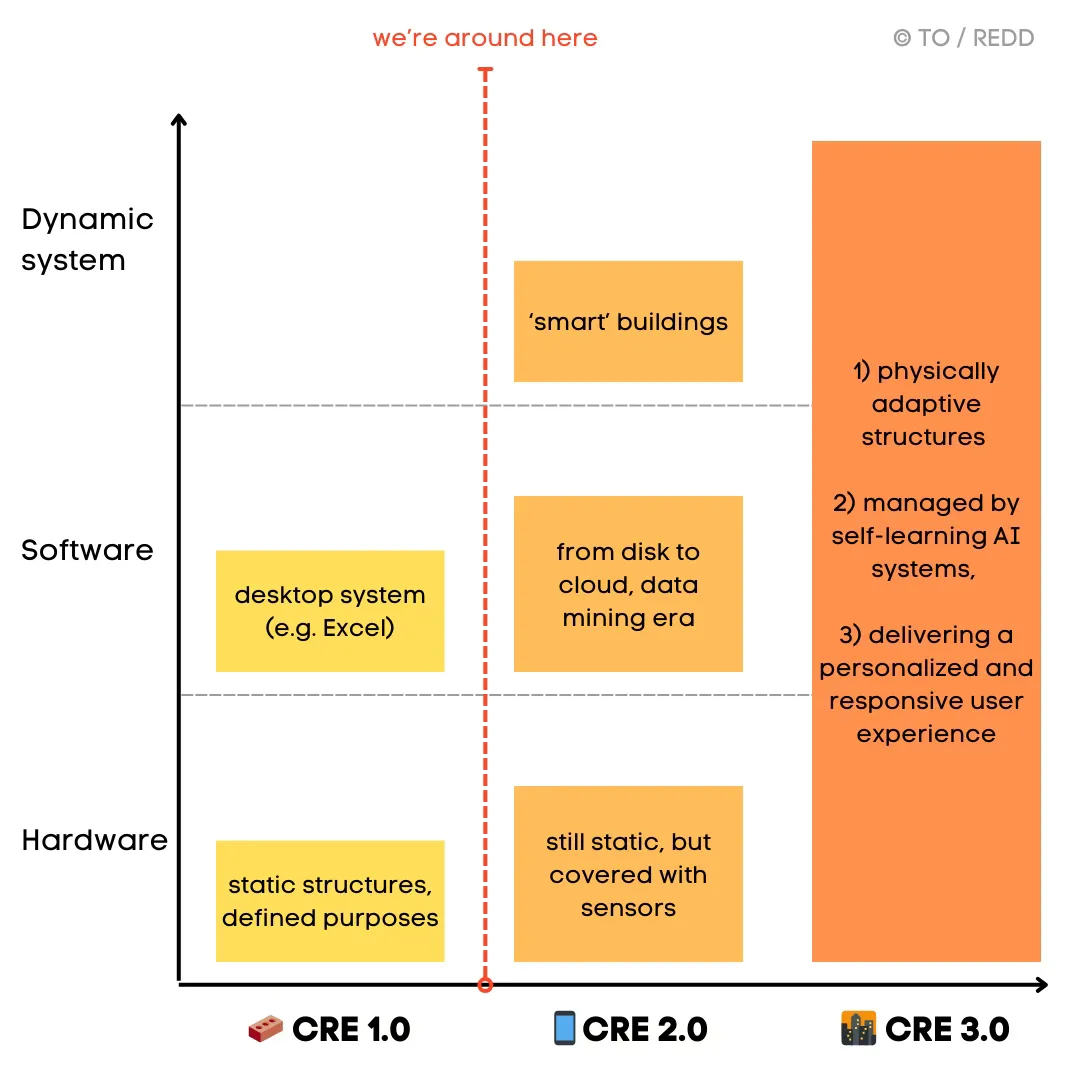Upgrading to CRE 3.0
CRE 1.0: The Hardware-Dominant Phase
In CRE 1.0, commercial real estate was defined by its hardware - the physical buildings. These structures were designed for specific, unchanging purposes, like office spaces, retail stores, or warehouses. The ‘software’ aspect was simple, mostly manual management and maintenance practices. Innovation was largely architectural, focusing on materials and design, but within a traditional framework. The user experience in CRE 1.0 was static, dictated by the limitations and fixed nature of the physical spaces.
Hardware: Static physical buildings with fixed designs and purposes
Software: Desktop applications with limited cloud integrations
Innovation: Focus on architectural and material improvements
User Experience: Constrained by the inflexibility of physical space
CRE 2.0: The Digital Evolution
CRE 2.0 marked the introduction of digital capabilities into the realm of real estate. While the hardware remained largely the same - the physical buildings - the software aspect evolved significantly. This era saw the integration of digital tools for property management, market analysis, and enhancing tenant engagement. Innovations included digital platforms for managing properties and virtual tours. The user experience improved with these digital interactions, yet was still primarily anchored in the physical attributes of the real estate.
Hardware: Physical structures remain unchanged with elements of smart buildings and flex adaptations
Software: Cloud tools for management and analysis
Innovation: Digital platforms for operational efficiency and tenant engagement
User Experience: Improved through digital interaction, but still bound to the physical properties of spaces
CRE 3.0: The Autonomous Ecosystem
In CRE 3.0, the ecosystem undergoes a transformative shift. Here, both the hardware and software evolve dramatically. The hardware becomes dynamically adaptable, capable of physical reconfiguration through robotics and AI. The software transcends traditional boundaries, evolving into a meta-software where AI algorithms act as active participants, making decisions and learning autonomously. This phase is characterized by a high degree of sustainability, efficiency, and user personalization, with spaces that are continuously optimized for performance and user needs, largely independent of human intervention. CRE 3.0 represents a future where commercial real estate is not just a space but a responsive, intelligent environment.
Hardware: Dynamic, physically adaptive structures to meet changing needs
Meta-Software: Self-learning and -improving systems actively participating in decision-making processes
Innovation: AI algorithms become proactive participants in the CRE ecosystem
User Experience: Exceptionally personalized and responsive; a blend of physical and digital experiences, with minimal human input required for its operation
In CRE 3.0, the distinction between hardware and software blurs. The ecosystem becomes a harmonious blend of physical adaptability and intelligent, autonomous digital operation, redefining the very essence of commercial real estate management and utilization.
